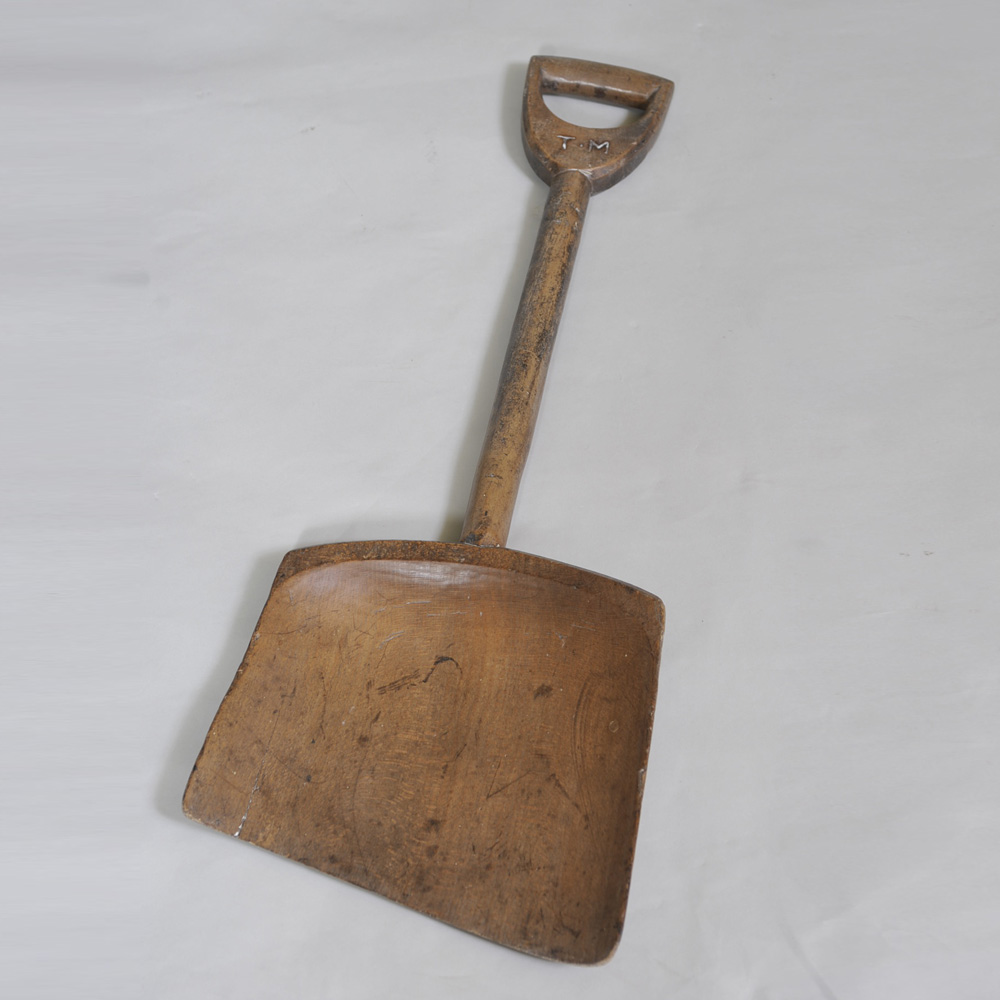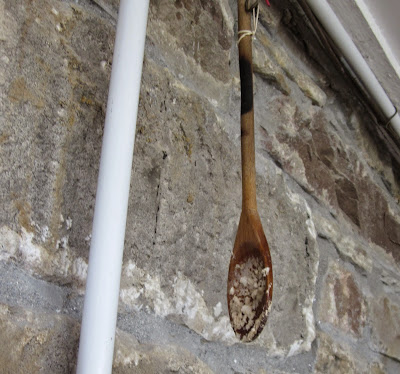The phrase 'alcohol production' neatly avoids the science, biochemistry and technology behind a number of varied and differing processes for making alcoholic drinks.
This generalised idea of 'alcohol production' is about as sensible and informative to understanding the processes as talking about 'metal production'. Different kinds of metal obviously require specific methods of production. Copper, bronze and iron are produced in very different ways. It's the same with making different kinds of alcohol from different sources of sugars.
No-one would ever believe that a primitive kind of weak metal could be produced by accidentally leaving some coloured rocks in a fire overnight. However, the story goes that a primitive sort of beer was discovered when a container of grain was left outside, it rained, the grain got wet, it germinated then it fermented and made some sort of weak beer. Or, maybe, a loaf of bread fell into a bucket of water, then it fermented. This simply cannot happen, it would defy all the laws of biochemistry.
One aspect of this 'alcohol production' debate is that grain can somehow naturally ferment into a weak beer when immersed in water. We have been told by a number of archaeologists that to make a primitive beer you don't even need malt and that barley can naturally ferment. This is scientifically and technically impossible. The idea of natural fermentation was first presented in this paper dating from 1991 and many subsequent academic papers cite this as evidence.
It is one of the myriad of anecdotal myths about alcohol, for example that animals can get drunk by eating rotten fruit. We shall write more about this sort of thing in future posts.
Grain is a living thing. When left in a bucket of water the grain drowns, it goes bad. Grain requires both water and oxygen to begin germination. For details of steeping the grain in a bubbling stream see an earlier post about how to make a base malt.
The idea that early beers or ales were somehow weak and inferior is also fallacious. If it were weak it would then be useless for that 'altered state of consciousness' that was, according to the academic literature, necessary for social feasting or ceremonial occasions. In Britain any alcoholic drink of less that 1.2% is not considered to be intoxicating, and is not subject to any Excise tax laws or regulations. Beer of less that 2.8% alcohol is classed as 'small beer", and is subjected to a low tax, whilst beers above 7.5% have a higher tax. Beer can be made to any strength the brewer wants.
Alcohol is produced by yeast when it digests sugars in the absence of oxygen. In the presence of oxygen, however, the yeast will produce water and carbon dioxide but no alcohol. You need anaerobic conditions for alcoholic fermentation. Yeast cannot ferment starches, only sugars. Sugar ferments into alcohol. Cereals do not contain any sugars. Therefore, it is absolutely impossible to make alcohol from grain by natural fermentation.
The concept of 'alcohol production' should be replaced by 'sugars production'. This would be a revolutionary paradigm shift in archaeological theory. Cereals can be easily converted into sugars when you have the right knowledge and skills.
Cereals are not just a staple crop, they can also be considered a status crop.
Grain can be converted into sugars by first malting it. Malt is partially germinated grain, it has the necessary enzymes, alpha and beta amylase, to convert starches into sugars in the presence of water. This occurs most rapidly when hot, at around 65 degrees Centigrade. The water is not only a suitable medium but it's also a necessary part of the biochemical reaction, hydrolysis. This is the mashing or saccharification process.
What, exactly, is malt? There is very little discussion of malt and malting technologies in the archaeological and anthropological literature. What is written appears to derive entirely from scholarly works written by archaeologists and anthropologists. There is no input from maltsters or brewers who actually work with malt. The archaeological and anthropological literature is self referential and frequently wrong. For example, malt is sometimes described as 'toasted, roasted, sprouted grain' which is not an accurate description of a base malt that provides the fermentable sugars in the mash tun.
When you roast the malt at hight temperatures then you destroy the enzymes and there will be no sugars to ferment into beer. Roasted malts are a modern phenomenon, dating from the around the 16th and 17th Centuries AD. There is an incorrect description of making malt for brewing by roasting it in a kiln in this paper.
Malting and the production of of liquid malt sugars is probably one of the first, if not the first, cereal processing technology. It's far easier to wet process the primitive grains that have more husk than starchy endosperm into desirable malt sugars than it is to grind them into good flour to make bread. To make porridge or gruel, the grains must be boiled for hours.
Malting and the production of liquid malt sugars from the grain was widespread throughout the Fertile Crescent, the cradle of agriculture, long before the rise of Islam. There is good evidence for deliberately made malting floors of stamped earth, clay and even of lime plaster at some of the first agricultural settlements of the Ancient Near East, for example at Beidha. Today the production and consumption of alcohol is forbidden by Islamic law. The civilisations of Ancient Egypt and Mesopotamia are well known for their beer manufacture. Now people no longer make malt in these countries.
There is a Biblical expression that describes "... a land flowing with milk and honey". Nobody thinks that this phrase refers to milk actually flowing through the fields. It is more likely to be a reference to rich grazing land that feeds the cattle, goats and sheep. The reference to honey seems to confuse the scholars. The Hebrew word debash or d'vash that is used in the Bible does not mean 'bee's honey' but, rather, it refers to an artificial sweetness of a vegetable nature, which scholars interpret as being made from dates, figs or possibly even grapes. To a brewer this is obviously wort, the liquid malt sugars. So the phrase 'land flowing with milk and honey' is a metaphor for rich pasture and arable land.
It's obvious that none of these scholars or archaeological experts have ever tasted sweet wort, straight from the mash tun. When we do mashing demonstrations we have invited people to taste the wort. Archaeologists have been known to refuse, sometimes backing away from us as if wort is somehow poisonous or horrid. No thanks, it's ok, they say. Those who do taste it usually say that it is sweet and delicious, commenting that it tastes like that stuff you get in jars for the vitamins. What they mean is, it tastes like malt extract, which is just concentrated wort.
Archaeologists Declan Moore and Billy Quinn came to Orkney ten years ago to have a look at our mash tun and brewing facilities. They both tasted the wort and were surprised, declaring it to be sweet and tasty. They were inspired enough to go and make some beer for themselves, in a spectacular way. They used a wooden trough and some hot rocks to re create a Bronze Age beer.
When brewers looks at a field of barley they see the potential for making malt for barrels of ale, beer or whiskey. Other people might see a field of grain to be used for making flour, loaves of bread, porridge or gruel.
The last three are whiskeys made from barley that has been malted then mashed, with the wash from the mash tun (brewers call it wort) fermented and distilled. They have nothing to do with the case other than malt being the source of the sugars for fermentation. The first six are diastatic base malts, with enzymes, and with the power to convert starch into sugars. The four middle ones are modern specialty malts with no active enzymes. They have been roasted at high temperatures and this destroys the enzymes. These malts are decorative, used strictly for the colouring and flavouring of ale and beer.
The enzymatic power of malt is measured by obscure units, the Diastatic Conversion Coefficient. Modern barley malts can have a DCC of about 200 degrees, some might even have as much as 230 degrees. Around 37-40 degrees of DCC is considered sufficient for self conversion. That's to say, a grain only needs this amount of enzymes to convert all of its' starches into sugars. Early malts need not have had all their grains successfully or completely malted to effect a good conversion into sugars.
In the 1970s some archaeologists at the Butser Farm made some malt using their recreated 'heated malting floor'. They achieved only two degrees of DCC. Although they were pleased with their amber malt, what they had made was a specialty malt, not a base malt. It was not useful for providing the sugars to ferment into alcohol.
This excess DCC power of modern malts can be used in the production of sugars. One traditional recipe for potato vodka or potcheen is one part crushed pale malt, by weight, to five parts boiled potatoes. The excess enzymes convert the potato starch into fermentable sugars.
It seems clear to us that, given the confusion and misunderstanding in the archaeological and anthropological literature about malt, what it is and how it is made and used, it's time that archaeologists and anthropologists started talking to the practitioners of the crafts of making malt and brewing beer.
The photograph below shows one of our demonstrations of the mashing or saccharification process. It was taken at the Eindhoven Open Air Museum a few years ago. We took some crushed malted barley, heated it in with water over the warm ashes of a fire made from wood and charcoal. Within one hour, the enzymes in the malt had converted all the starch into sugars.
This saccharification process works in a bowl and it also works on a hot flat stone beside the fire, provided that you keep the malted barley biscuit/cake wet all the time. You don't even need a container to mash.
The sweet bappir or 'cakes' on the stone were eaten very quickly, taken by visitors. In prehistoric times, the manufacture of malt sugars from the grain, by malting and mashing, would have been equally as desirable.
 |
| a demonstration of the mashing or saccharification process, using basic equipment |
We welcome comments and discussion, in fact, we look forward to them.











































